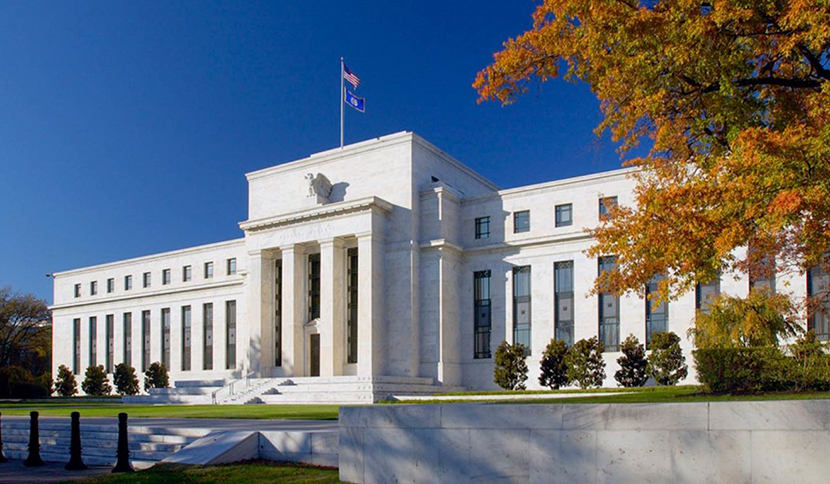
Fed Announces Additional $2.3 Trillion in Government Loan Facilities

The Federal Reserve on Apr. 9 announced a dramatic increase to the scale and scope of its mortgage-backed securities purchases, providing up to $2.3 trillion in new loans to support the economy to bolster the ability of state and local governments to deliver services during the coronavirus pandemic.
The Mortgage Bankers Association welcomed the announcement, saying it will help stabilize commercial mortgage markets and ensure lenders can continue to finance properties.
The announcement (https://www.federalreserve.gov/newsevents/pressreleases/monetary20200409a.htm) includes funding for the Small Business Administration’s Paycheck Protection Program (PPP), as well as the Main Street Lending Program; the Primary and Secondary Market Corporate Credit Facilities (PMCCF and SMCCF); the Term Asset-Backed Securities Loan Facility (TALF) and, for state and local governments, the Municipal Liquidity Facility.
“Our country’s highest priority must be to address this public health crisis, providing care for the ill and limiting the further spread of the virus,” said Federal Reserve Board Chair Jerome H. Powell. “The Fed’s role is to provide as much relief and stability as we can during this period of constrained economic activity, and our actions today will help ensure that the eventual recovery is as vigorous as possible.”
MBA President and CEO Robert Broeksmit, CMB, issued a statement praising the Fed announcement (https://www.mba.org/x263330.xml):
“MBA applauds the Federal Reserve for announcing its intent to include outstanding private-label CMBS AAA securities in its Term Asset-Backed Securities Loan Facility (TALF) program, which was re-established on March 23 to provide more liquidity to securities markets.
“This decision protects borrowers by stabilizing commercial mortgage markets more broadly and helps ensure lenders can continue to finance properties – particularly in small and mid-sized markets across the country, where numerous small businesses employ millions of Americans.
“MBA looks forward to continuing to work with all policymakers and stakeholders, including Congress and the administration, to help borrowers, lenders, and mortgage servicers during the pandemic.”
Actions taken by the Fed include:
–Bolstering the effectiveness of the SBA Paycheck Protection Program by supplying liquidity to participating financial institutions through term financing backed by PPP loans to small businesses. The PPP provides loans to small businesses so that they can keep their workers on the payroll. The Paycheck Protection Program Liquidity Facility (PPPLF) will extend credit to eligible financial institutions that originate PPP loans, taking the loans as collateral at face value.
–Ensuring credit flows to small and mid-sized businesses with the purchase of up to $600 billion in loans through the Main Street Lending Program. The Treasury Department, using funding from the Coronavirus Aid, Relief and Economic Security Act (CARES Act) will provide $75 billion in equity to the facility;
–Increasing the flow of credit to households and businesses through capital markets, by expanding the size and scope of the Primary and Secondary Market Corporate Credit Facilities (PMCCF and SMCCF) as well as the Term Asset-Backed Securities Loan Facility (TALF). These three programs will now support up to $850 billion in credit backed by $85 billion in credit protection provided by the Treasury.
–Help state and local governments manage cash flow stresses caused by the coronavirus pandemic by establishing a Municipal Liquidity Facility that will offer up to $500 billion in lending to states and municipalities. The Treasury will provide $35 billion of credit protection to the Federal Reserve for the Municipal Liquidity Facility using funds appropriated by the CARES Act.
–The Main Street Lending Program will enhance support for small and mid-sized businesses that were in good financial standing before the crisis by offering 4-year loans to companies employing up to 10,000 workers or with revenues of less than $2.5 billion. Principal and interest payments will be deferred for one year. Eligible banks may originate new Main Street loans or use Main Street loans to increase the size of existing loans to businesses. Banks will retain a 5 percent share, selling the remaining 95 percent to the Main Street facility, which will purchase up to $600 billion of loans. Firms seeking Main Street loans must commit to make reasonable efforts to maintain payroll and retain workers. Borrowers must also follow compensation, stock repurchase, and dividend restrictions that apply to direct loan programs under the CARES Act. Firms that have taken advantage of the PPP may also take out Main Street loans.
–Additionally, to support further credit flow to households and businesses, the Federal Reserve will broaden the range of assets that are eligible collateral for TALF. As detailed in an updated term sheet, TALF-eligible collateral will now include the triple-A rated tranches of both outstanding commercial mortgage-backed securities and newly issued collateralized loan obligations. The size of the facility will remain $100 billion, and TALF will continue to support the issuance of asset-backed securities that fund a wide range of lending, including student loans, auto loans, and credit card loans.
All of these facilities are established by the Federal Reserve under the authority of Section 13(3) of the Federal Reserve Act, with approval of the Treasury Secretary.
Additionally, the Fed, the Federal Deposit Insurance Corp. and the Office of the Comptroller of the Currency yesterday issued an interim final rule for Paycheck Protection Program Facility (https://www.federalreserve.gov/newsevents/pressreleases/files/bcreg20200409a1.pdf).
The interim final rule modifies the agencies’ capital rules to neutralize the regulatory capital effects of participating in the Federal Reserve’s PPP facility because there is no credit or market risk in association with PPP loans pledged to the facility. Consistent with the agencies’ current capital rules and the CARES Act requirements, the interim final rule also clarifies that a zero percent risk weight applies to loans covered by the PPP for capital purposes. The rule is effective immediately and comments will be accepted for 30 days after publication in the Federal Register.
